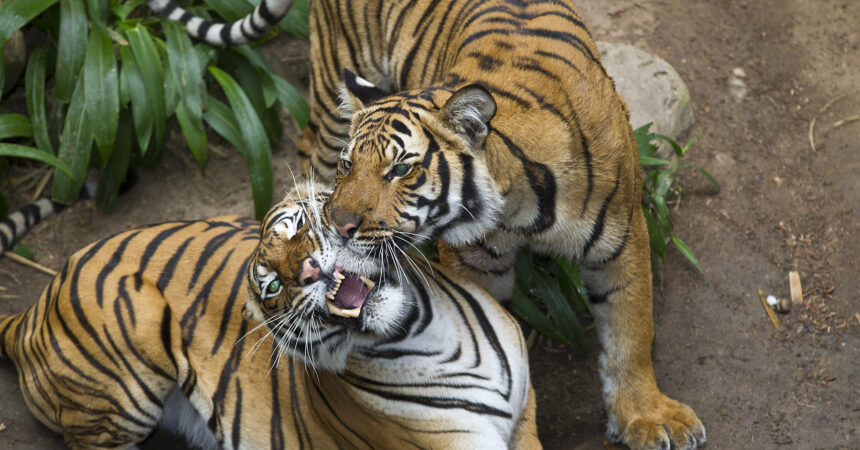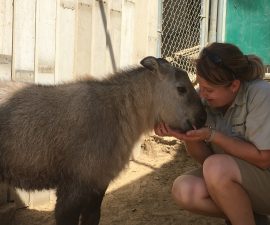They are not apex predators for nothing. Tigers—the unmistakable fiery-orange, striped member of the genus Panthera—are the largest species of cat in the world. Depending on the species (those in the northern lattitudes are the biggest), adult males can clear 10 feet in length and 650 pounds; females are smaller, but no less dramatic.
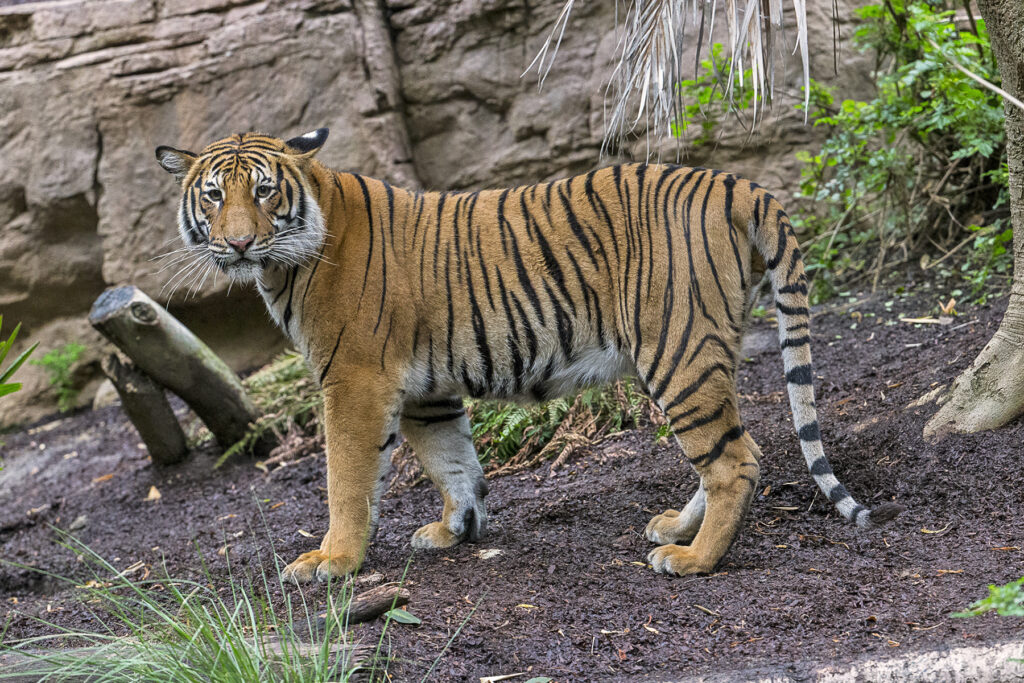
There are six subspecies of tiger whose names reflect their tiny remaining home ranges in Asia, India, and Russia: Sumatran, Siberian, Bengal, South China, Malayan, and Indochinese. Three other tiger subspecies have gone extinct in the 20th century, most recently the Caspian tiger in the 1950s. With the remaining survivors all listed as Endangered or Critically Endangered, there is good reason to highlight them and raise awareness on Global Tiger Day, July 29. This annual event began in 2010 at the Saint Petersburg Tiger Summit, when it became clear that a global conservation effort was needed to preserve these majestic cats. San Diego Zoo Global is proud to work with tigers in situ and ex situ, and collaborate with other organizations to ensure these big cats get the conservation efforts they deserve. The San Diego Zoo is home to three male Malayan tigers and the Safari Park is home to six Sumatran tigers. Visitors can also tune into the Park’s Tiger Cam any time.
I met up with two senior wildlife care specialists at the Zoo’s outdoor tiger compound recently (while wearing masks and properly social distanced) to get the latest on the cats there. Both Jo Ann Haddad and Aimee Goldcamp spoke of the challenge and importance of providing opportunities for the male tigers, in the prime of their lives, to exercise their natural cat behaviors. Jo Ann described them as “Three hundred-pound, persnickety house cats that can kill you.” Yes, they sleep a great deal, but “They show me new things, which keeps the job from getting boring. They make us ‘up our game’ as caregivers, to best challenge them using tactile and olfactory clues and eliciting their graceful strength,” she added.
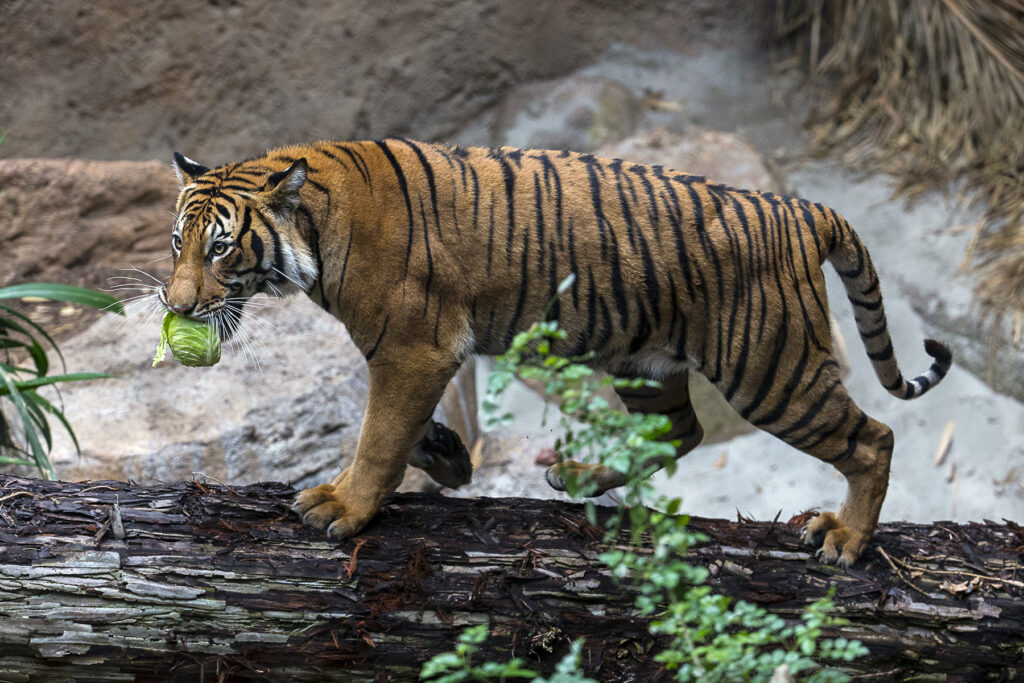
All three males—Conner, Cinta, and Berani—are well represented in North American zoos, so while they may be called into the Species Survival Plan to breed in the future, until that time, their welfare at the Zoo is top priority. Aimee explained how tiger care uses “experiences” for the cats. “We provide choices to draw out their natural behaviors, like swimming and climbing and what provokes them to stalk, pounce, or hunker down.” Jo Ann and Aimee even simulate seasonal variations, which for Malayan tigers is “rainy or monsoon seasons”. They create a multi-day experience for the cats tied to the pool cleaning, with it drying up and refilling over time and “rain” from the misters. “It’s a three- to four-day experience of rain and getting soaked,” which the tigers seem to revel in. Another days-long tiger experience entails reinvigorating the tigers’ awareness of their tapir neighbors. Collecting urine, hay bedding, and body grease from the tapir habitat, staff disperses the olfactory “goodies” around the tiger habitat and even add tapir footprints in the sand, applied with a foot model on a stick. The tiger’s interest is piqued. The death of an animal often draws vultures to tidy up, so part of this staff’s efforts includes flying a vulture kite over the habitat to cue the tigers in a natural way to a savory carcass discovery. Alas, a lamb carcass is secured to a raft in their pool, and the tiger gets to stalk, kill, find, and drag the food to a safe spot to devour it. This is a tiger ecology-based way to ensure the cats can live their best life!
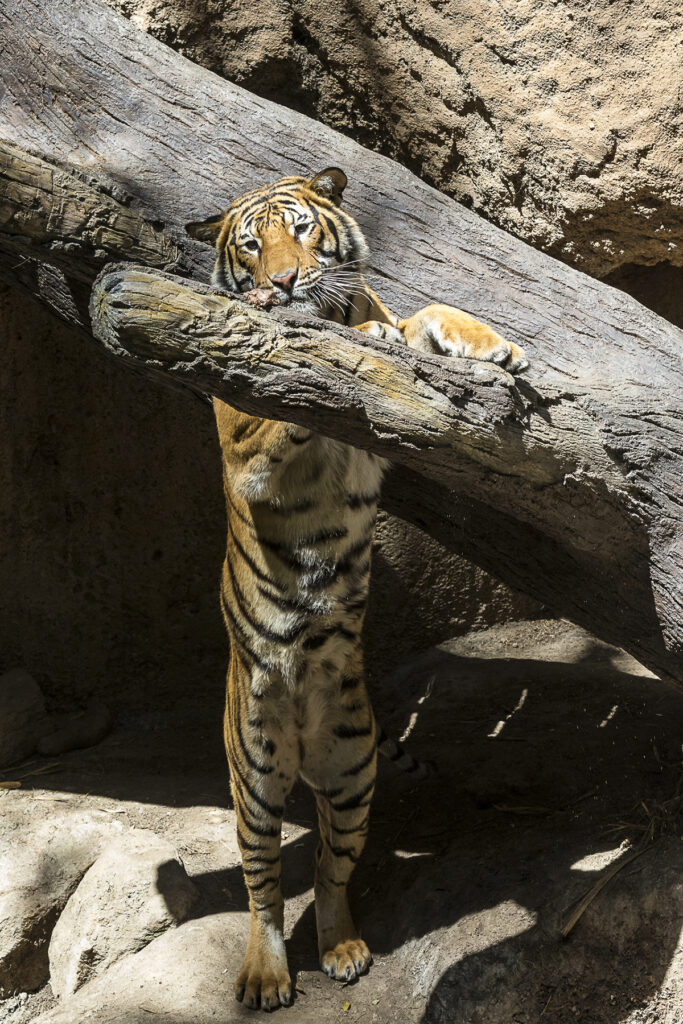
Another huge part of animal welfare is staying healthy and thriving. When Connor showed signs of hypertension, wildlife care specialists began working toward collecting blood pressure readings from him with a cuff attached to his tail. While this may seem a farfetched, the cats are already desensitized to getting necessary injections in the tail, hip, and rear end, as well as blood draws from their tail, which veterinary staff use to monitor the animal’s overall health. Jo Ann and Aimee worked with Connor getting him used to the sounds and sensations associated with collecting blood pressure readings and discovered the ideal cuff size. “He was rock solid on foundation behaviors—station, touch, tail—about 90-percent there, then Covid19 hit, and training was sidelined,” said Aimee.
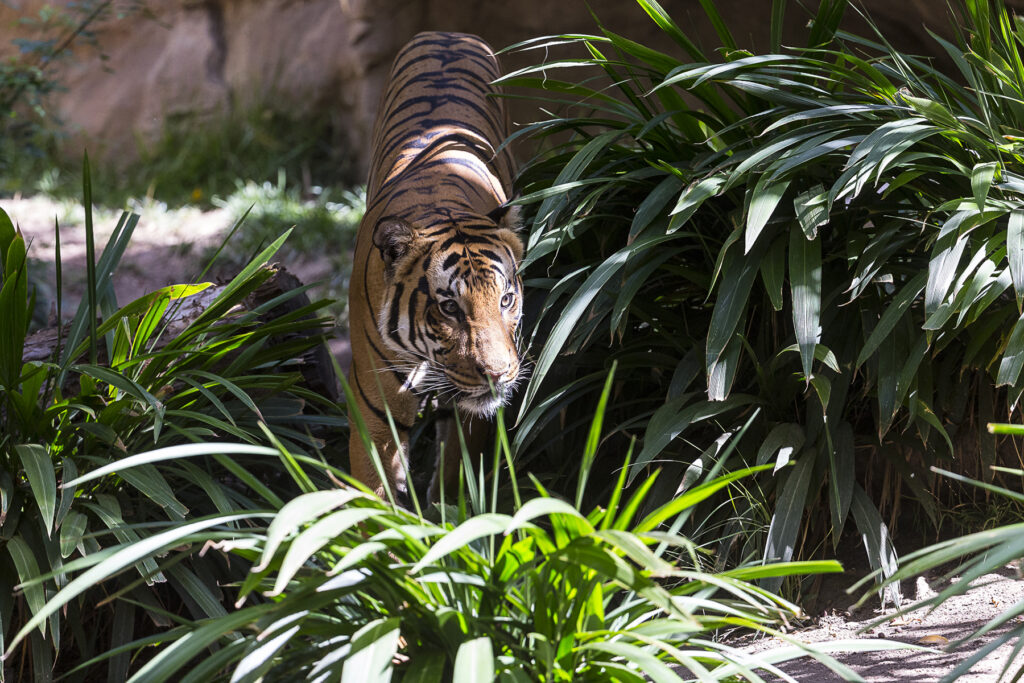
Emergency Recall is another behavioral repertoire that keeps the cats and people safe in case of an unexpected event like a tree falling in the habitat, an earthquake, etc. Wildlife care specialists went to great lengths to find the perfect, unshakeable “reward” for the tigers to literally stop whatever they are doing (or eating) and bolt to the back area. Aimee and Jo Ann explained that after a few fits and starts, they found that a juicy five-pound lamb shank worked nicely, and didn’t take the cats too long to consume. Training occurs about once a month, at different times, using all different scenarios like a person at the fence line or something in the pool to make sure no matter what is going on, the tigers will come inside. And they do! “I’d like to say we’re that good, but it works because tigers are so food motivated,” said Jo Ann. “We just found that one thing that does it for them.” And for many visitors, observing the tigers in action (or even sleeping), does it for them!
Karyl Carmignani is a staff writer for San Diego Zoo Global. Enjoy more of her work in Feet First.

